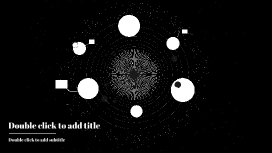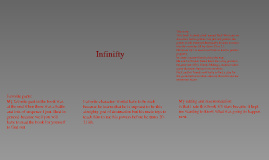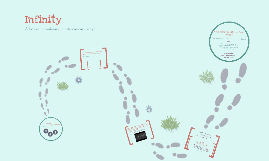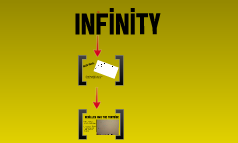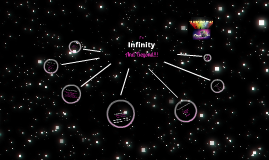Infinity is Infinity is Infinity...
Transcript: Why? This process continues for infinitely many pairs. Wow... Writing that could have saved me hours... If you want to get into the study of sets, there is a whole branch of math dedicated to just that. It is called set theory. Now, quit bothering me. I'm tired. Because there is a one-to-one correspondence between the two collections, they must have the same number of elements. Unfortunately infinity is not a number, so we have to use the term cardinality. The cardinality of the set of all subsets of any set is strictly greater than the cardinality of the set; i.e., for any set A,cardinality(powerset(A)) > cardinality(A). I will leave you with one final thought. While this may seem outlandish to you, the conclusion that we have reached is that there simply is not a one-to-one correspondence for that particular pairing. We can then take our index fingers, and place them together as we did our thumbs; then continue until there are no fingers left to match. The power set theorem states... The set of all positive integers is known as the set of natural numbers. Infinity Now that we know what cardinality is, and have established that the set of natural numbers, and the same set with 1 removed are infinately equal, we will stretch your mind some more. Here is the proof... Think for a moment. We never defined one word: set. We assumed that it meant a "bunch of things." By using something called "one-to-one correspondence" we can do the following: NO. Sadly, we have lost the number 1. This proves that there is no one-to-one correspondence between MYSTERY and S. The power set of S also has greater cardinality than S. Now that we have cleared that up, I will teach you a term in the language of MATHEMATICIAN. ...we would know that the two collections share a one-to-one correspondence with each other. We have now learned that there are infinately many infinities that are infinately large. ...Then you have less of the quantity than you did before. In a nutshell, a positive integer is any number greater than or equal to 1. The cardinality of a set is the amount of elements in that set. 1 + 1 = 2, therefore 1 corresponds with 2. 2 + 1 = 3, so 2 corresponds with 3, etc. Forgetting everything we know about counting, we want to find out if our friend has the same number of fingers as we do. Basically, there are infinitely many infinite infinities that are infinitely infinite, and go on for infinity, because infinity is infinity is infinity... Since there isn't a pair for "1," there must not be one-to-one correspondence between the two sets of numbers at all, right? Since we saw that removing one element from a set didn't decrease the size or cardinality of a set-- because it is infinitely large-- we will now move on to "giant sets." Now, let's try something different... For this reason, having two seperate frames of mind regarding quantities, we must begin to investigate... Our journey to infinity begins with "2." Now, as we move on, we must forget; forget that numbers actually mean something. "8" no longer exists "173" no longer exists Watch this "TED-Ed" video to summarize what we have learned so far, and expand our knowledge of the infinite through the aforementioned "giant sets, and more!" To better understand the notion of infinity, we will use the set of all natural numbers. We must strip our minds of the names of numbers, leaving behind only the idea that if one collection of objects is equally as numerous as another. .. By pairing in such a fashion, we learn that a one-to-one correspondence between these two sets of numbers does, in fact, exist. Plus, Cantor's theorem proves that for every set, the set of all its subsets is even greater. Let's move on! In actuality, some collections are just too large to be called a sets. How does one begin a search for the infinite? There is no infinity that is greater than all the rest. In doing so, we find that "1" does not correspond with any other number. Because of this, you are probably thinking... Once we know this, then we know that "n + 1" is our original element with 1 added to it. On one hand, our life experiences tell us that if you have a quantity, and you remove something from that quantity... We must recognize that "n" is an element in our set. we must also know that the arrow means "corresponds with..." And check for correspondence between it and the set of natural numbers; 1, 2, 3... Our next step is to think of the whole collection of ALL positive integers. What are positive integers? If we take our right hand, and our friend's left hand and place the thumbs together... We find that both of us have fingers left on our respective hands. WRONG!!! Let's say we have a friend with us... A look at the ordinary in extraordinary ways... Let's take our new set; 2, 3, 4... For each element x of set S, we will put x in MYSTERY if x is not in the subset corresponding to x, and we will not put x in MYSTERY if x is in the subset corresponding to x. In doing so,we know that






